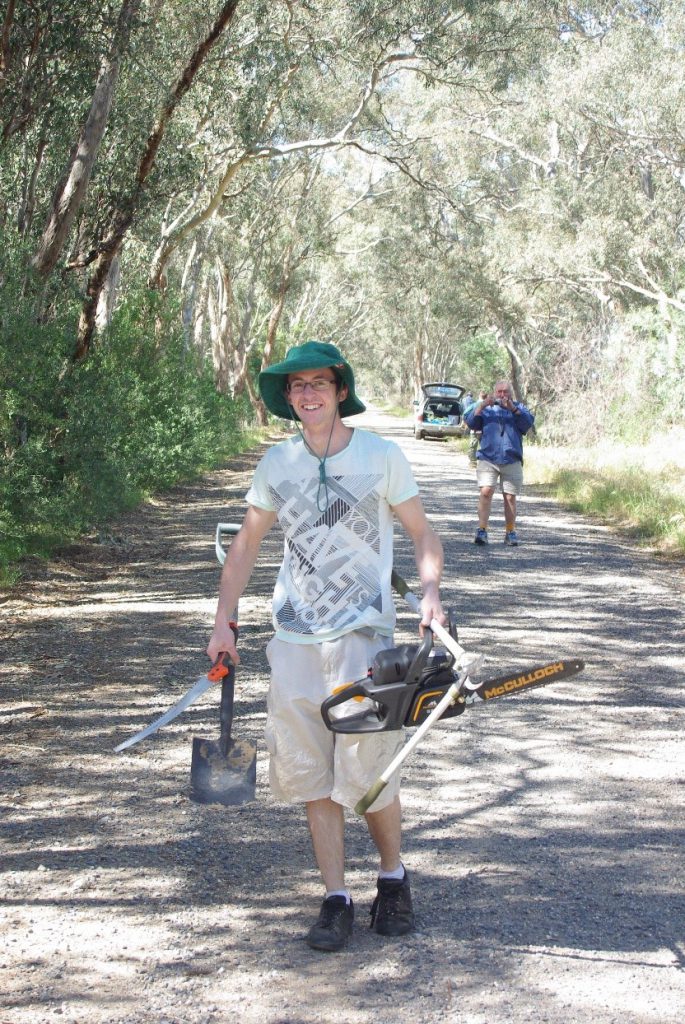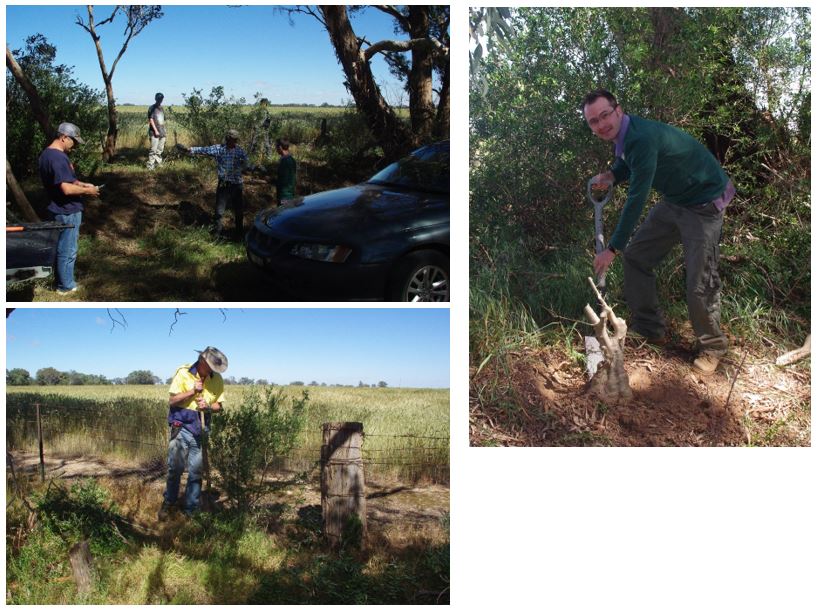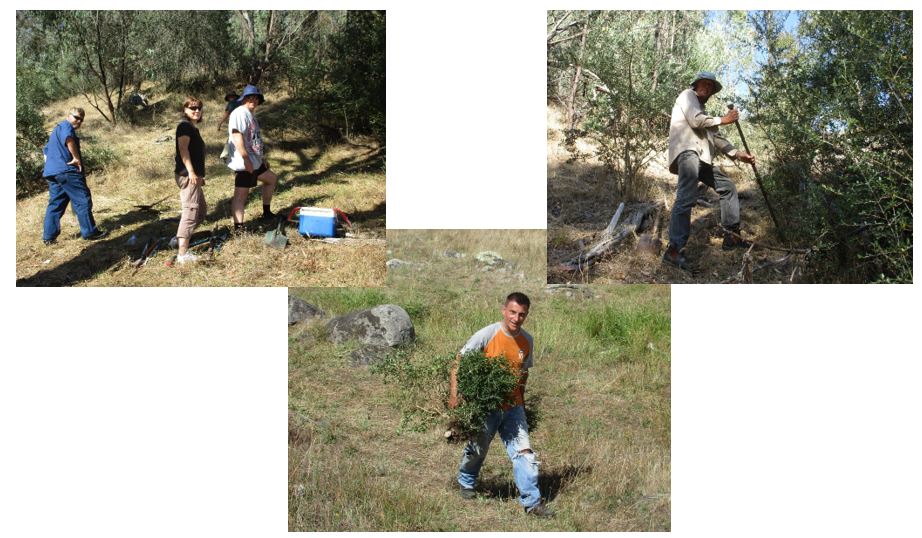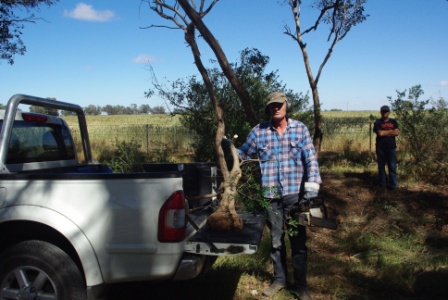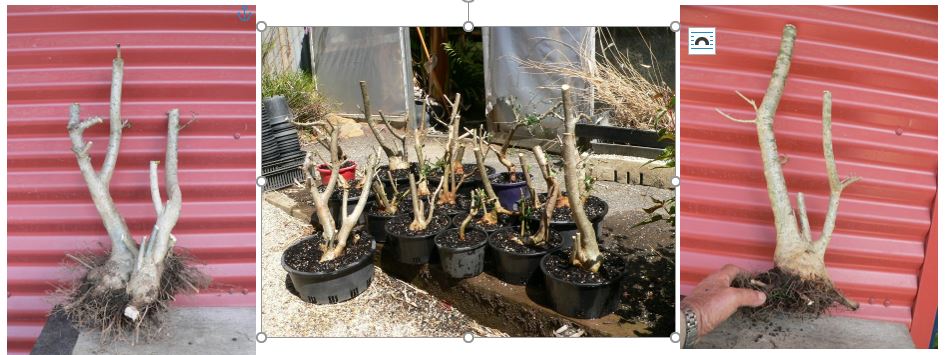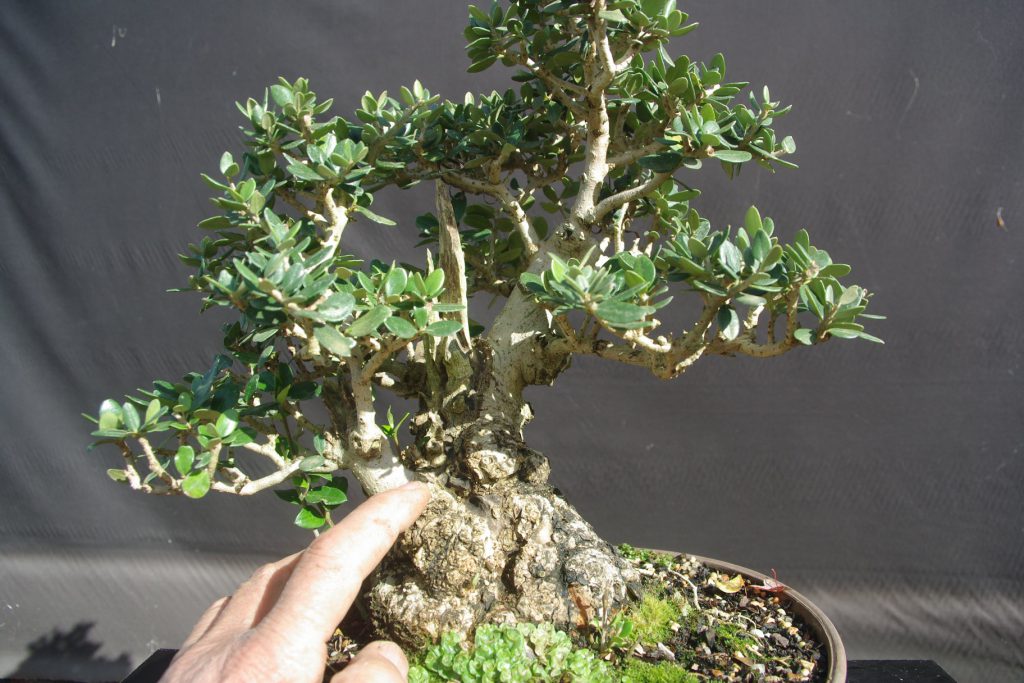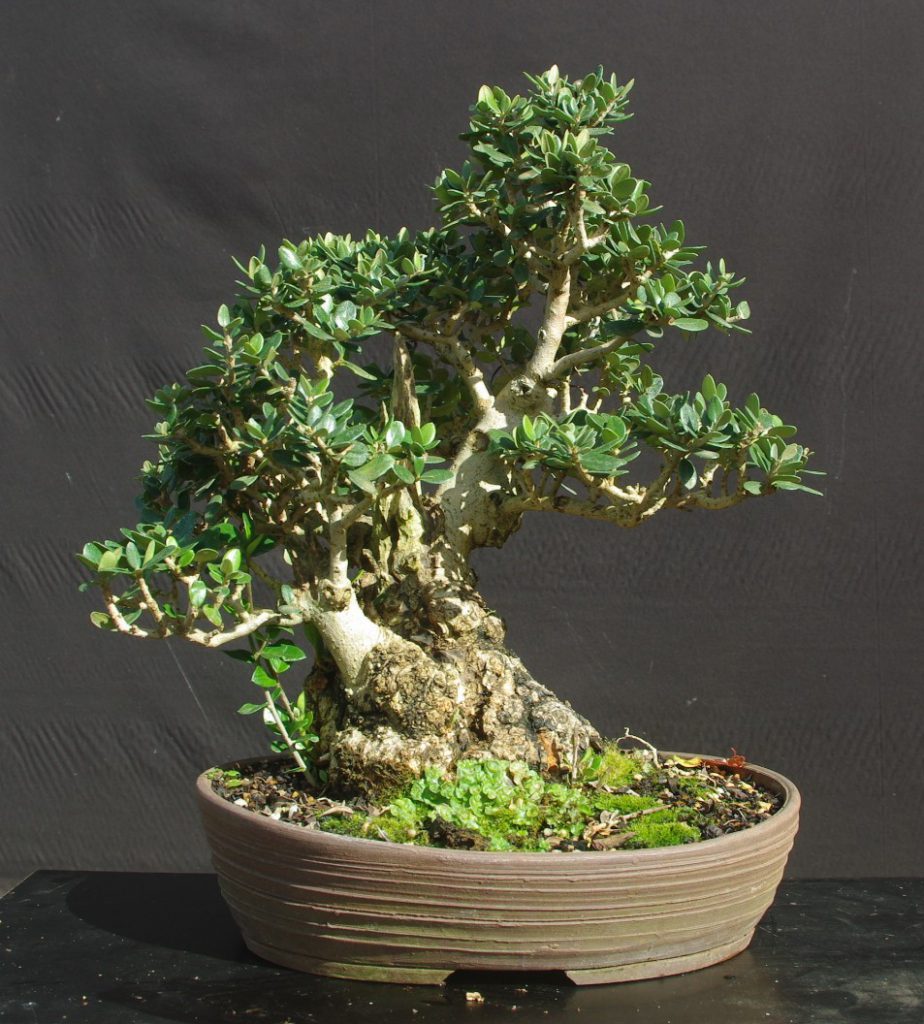This privet had to go to make way for a new garden bed. Middle of our summer but it is a privet so really tough. I think it stands a good chance of surviving.
It does have a short, fat trunk as a result of being chopped off a few times years ago. When it refused to die the gardener resorted to trimming regularly to maintain a ball shaped topiary.
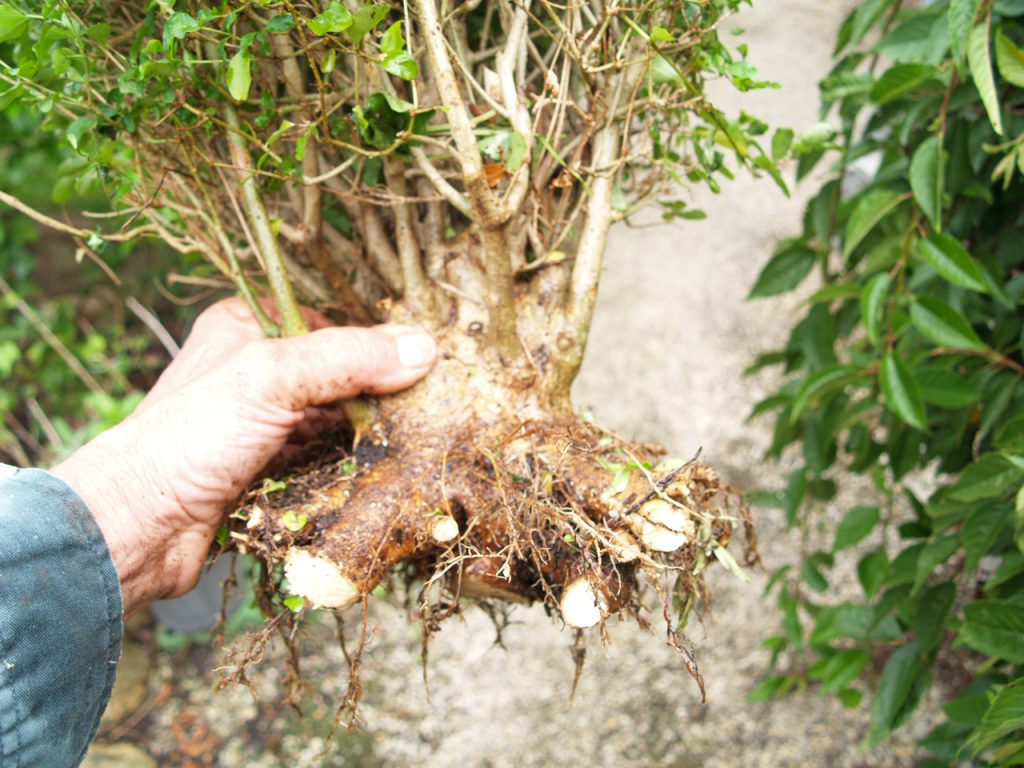
After this was dug I got busy with other jobs and forgot about it so it sat overnight and part of the next day on top of the soil. By the time I picked it up the fresh shoots were quite wilted.
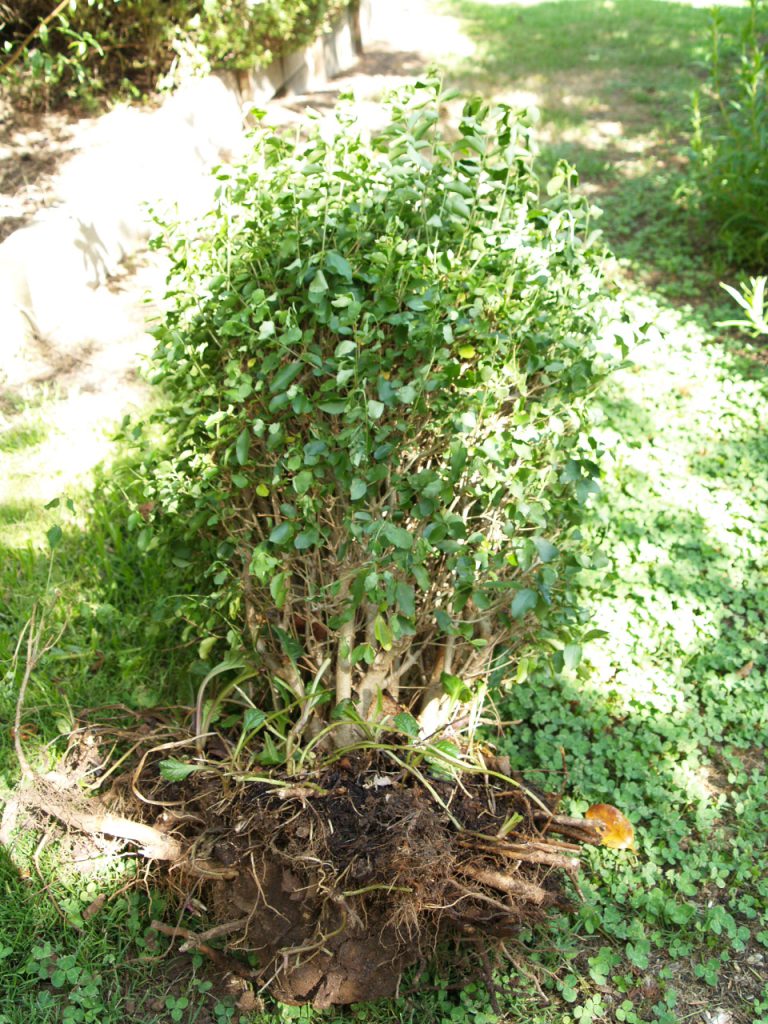
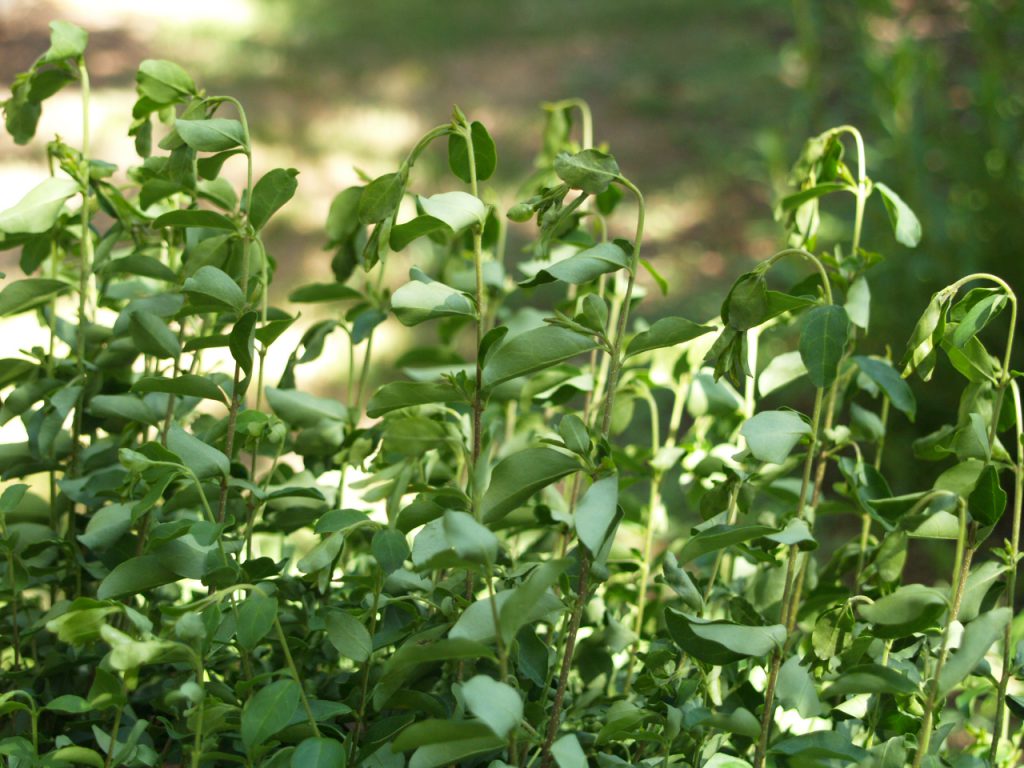
Root ball was soaked in water for the rest of the afternoon until I had time to deal with it.
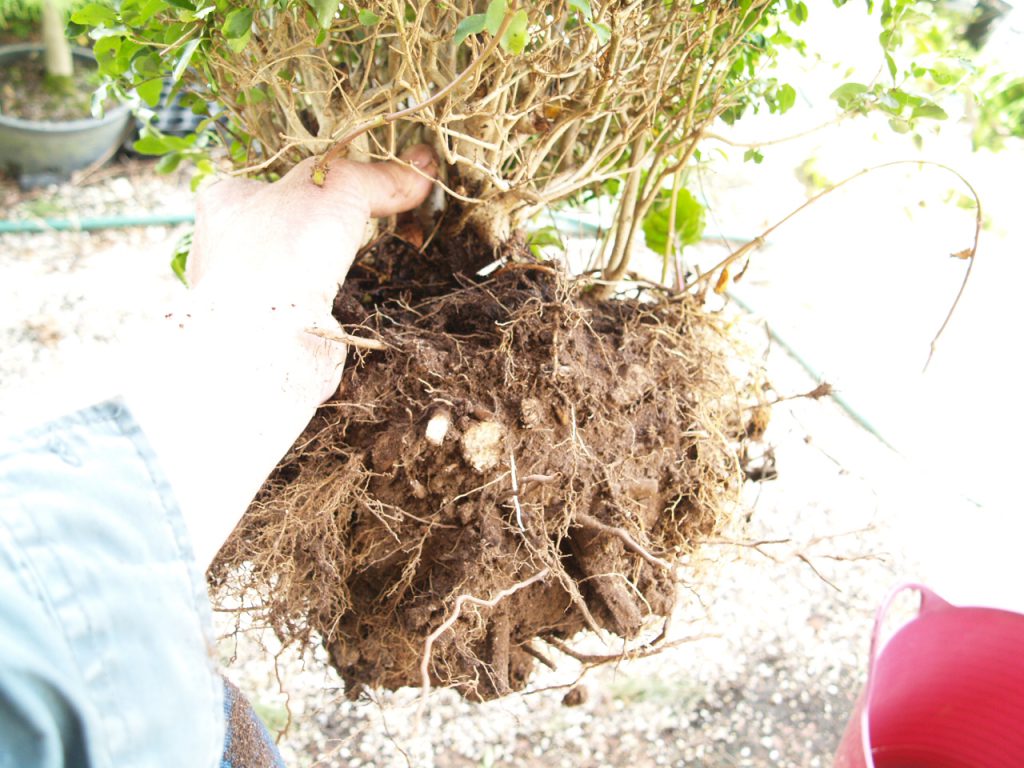
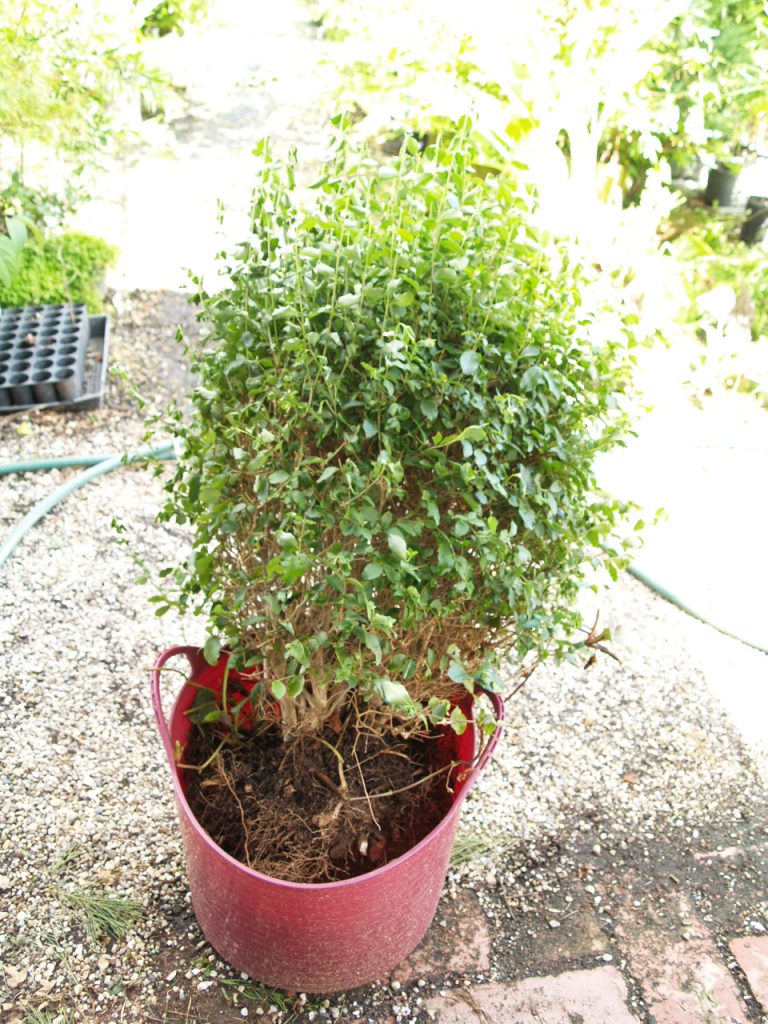
After soaking I raked out much of the garden soil, chopped large roots and shortened all others to fit in a 30 cm orchid pot.
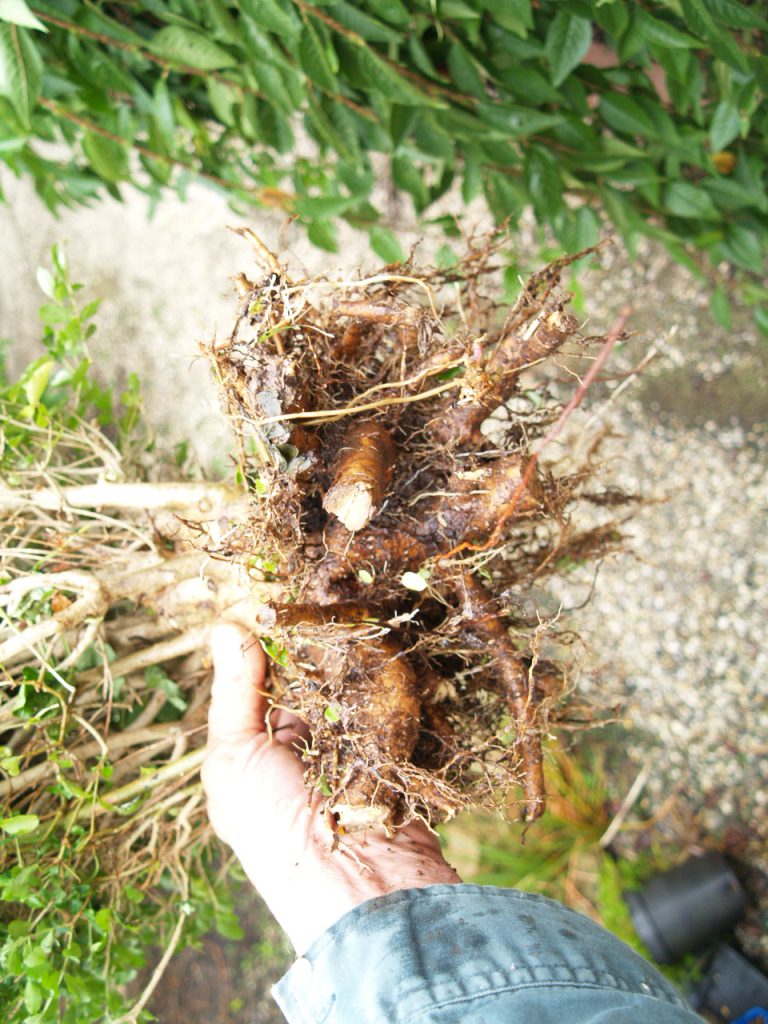
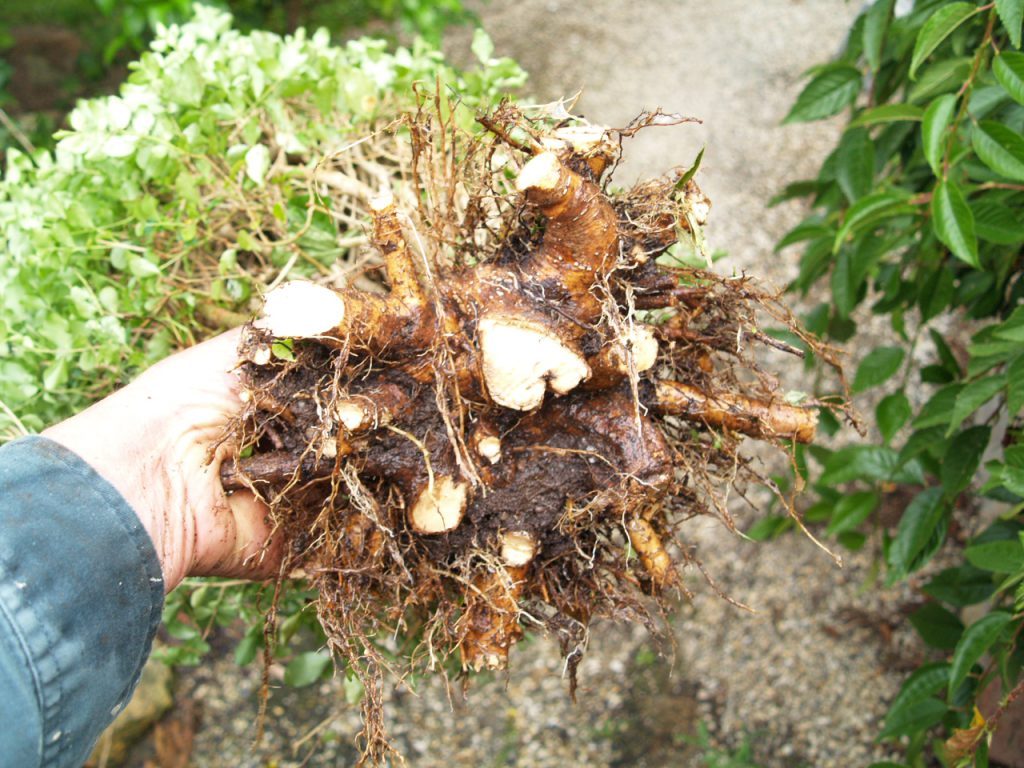
Finally the tree was potted into my usual bonsai potting mix, watered well and the pot placed under a bonsai bench in part shade.
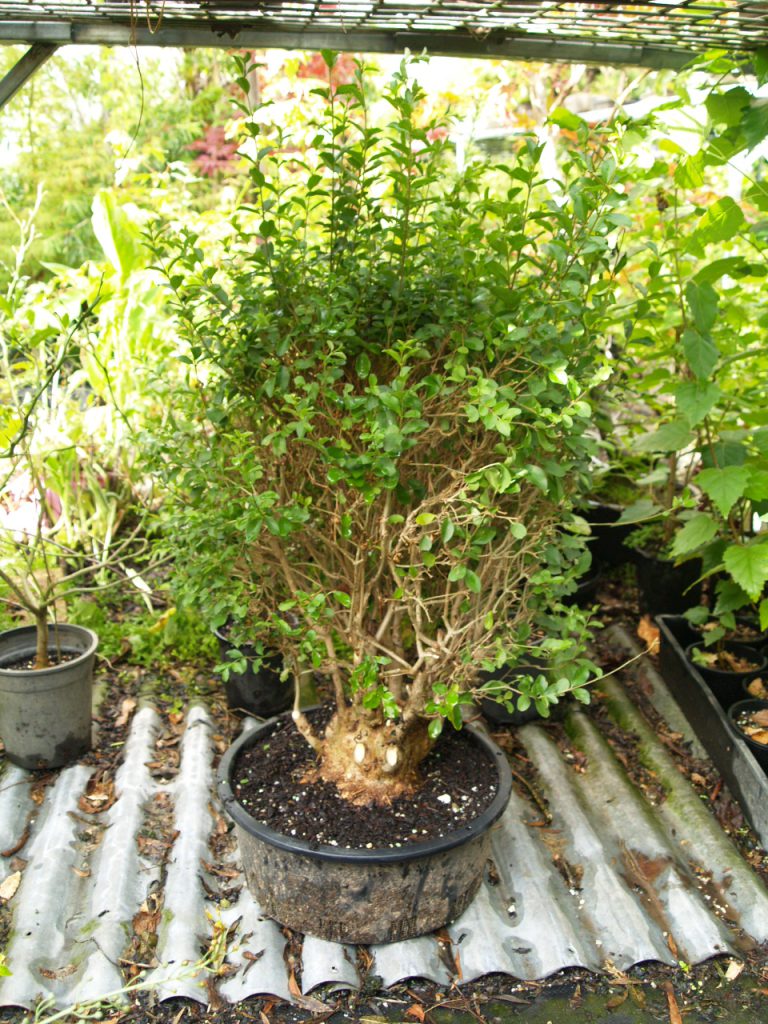
I can report that 2 weeks later all the shoots are erect and looking good.
Today I had another opportunity to further trial summer transplanting. Another garden and some more trees that had to go.
First up is an Acacia cognata. I believe it is one of the compact cultivars, possibly ‘Limelight’. All trunks were chopped back a few weeks ago. The number of new shoots all over the trunks prompted me to try this transplant.
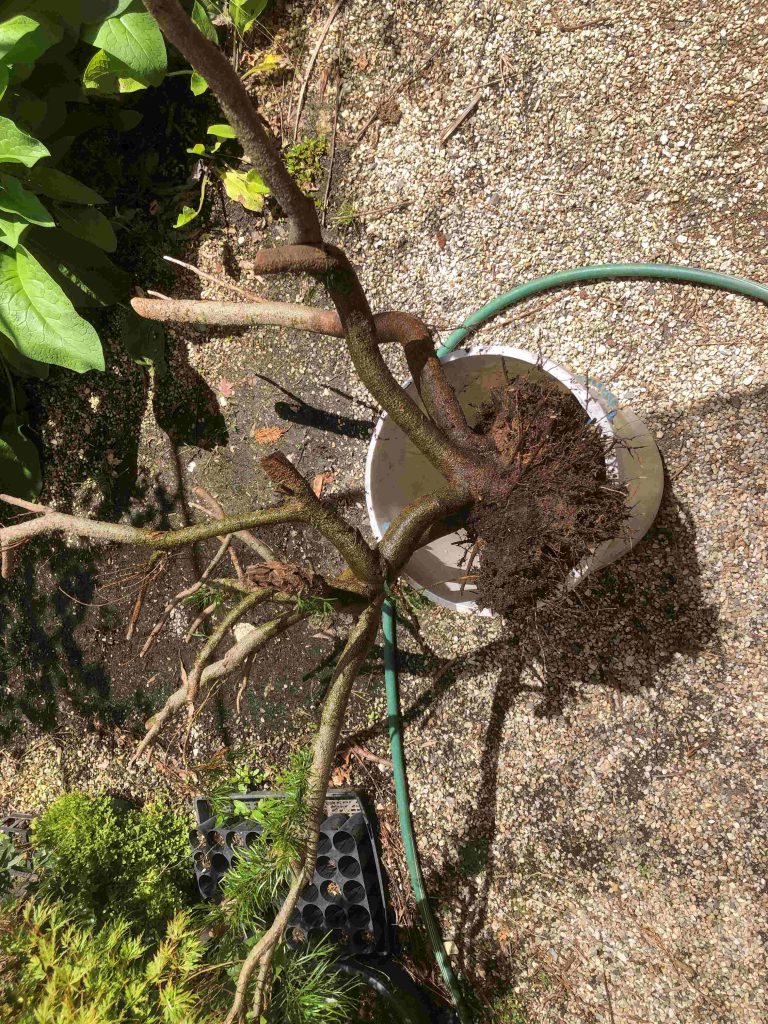
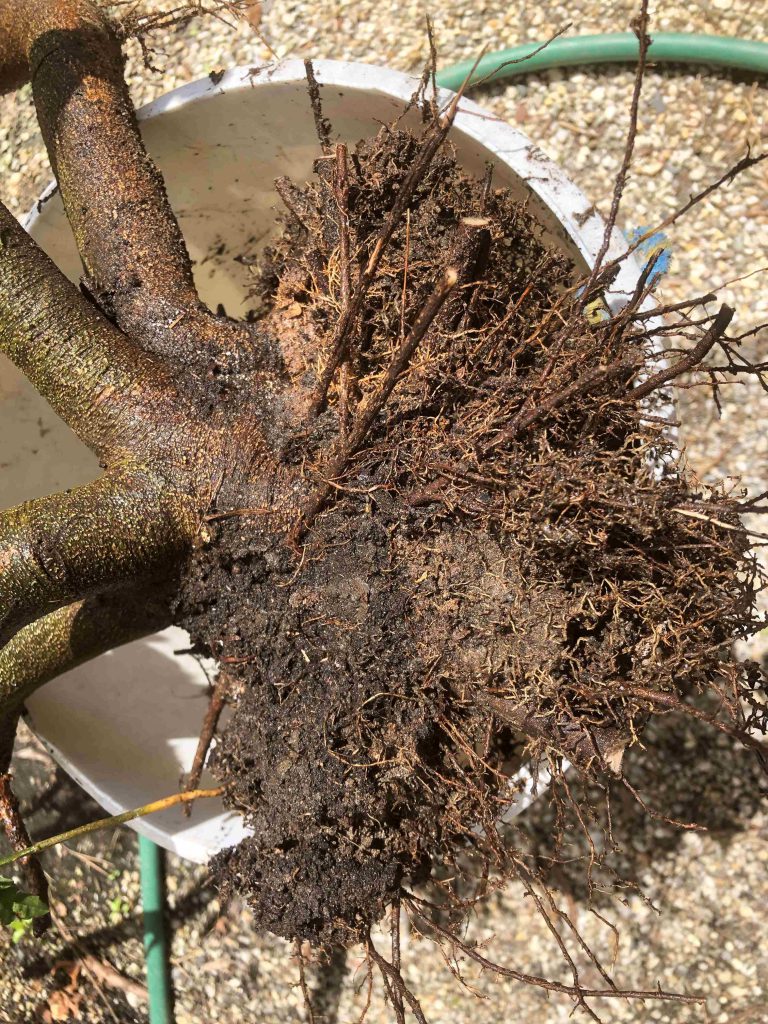
Roots were chopped back to fit a 30 cm orchid pot and most of the (hydrophobic) garden soil removed before potting up in usual bonsai potting mix.
The other trees collected today were 3 self sown desert ash – Fraxinus angustifolia. Not big trunks but definitely suitable as trials for summer collecting.
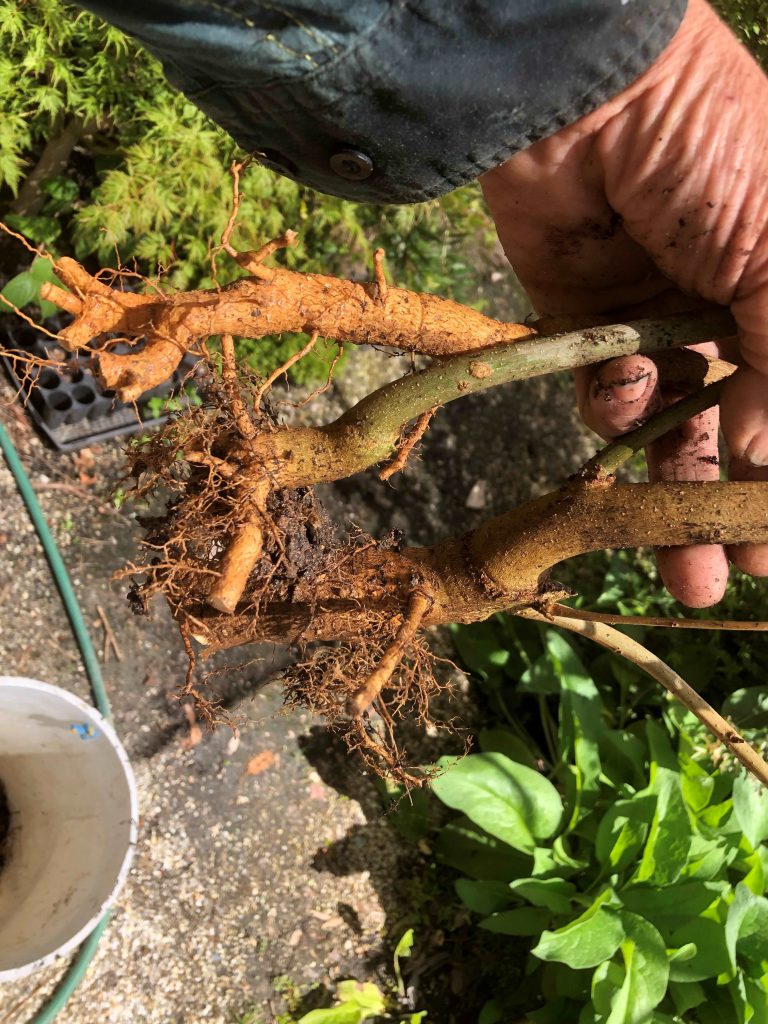
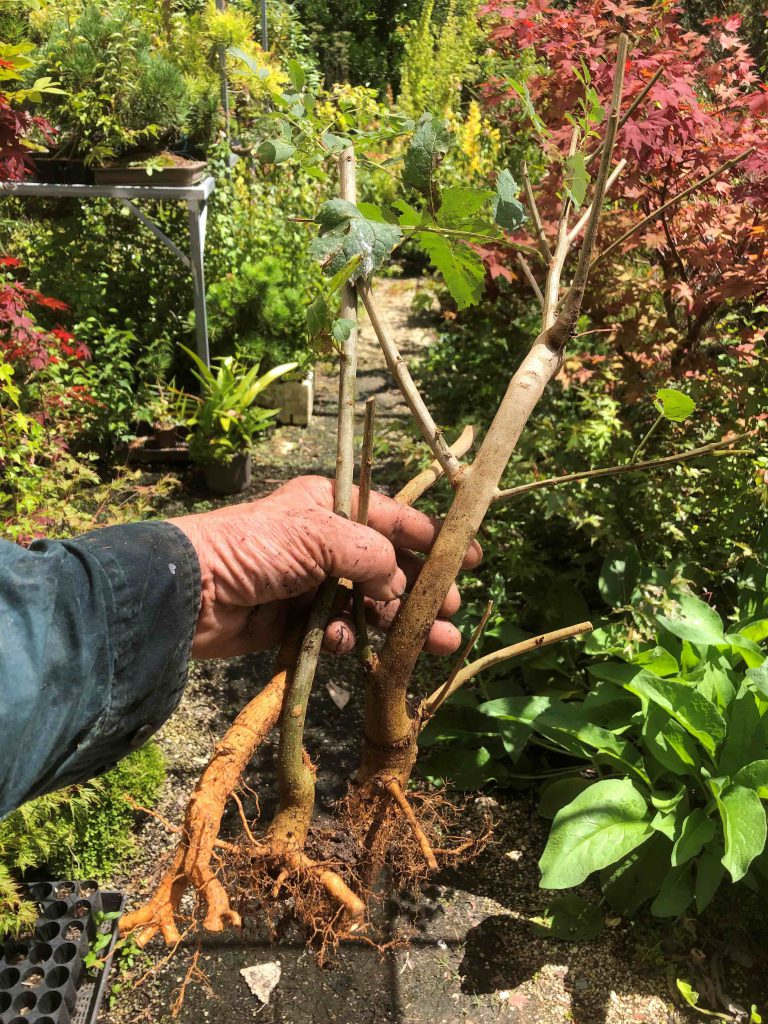
Again all these trees were watered well then placed under the bench in dappled shade. I’ll report back in a few weeks on how these trees are progressing.

